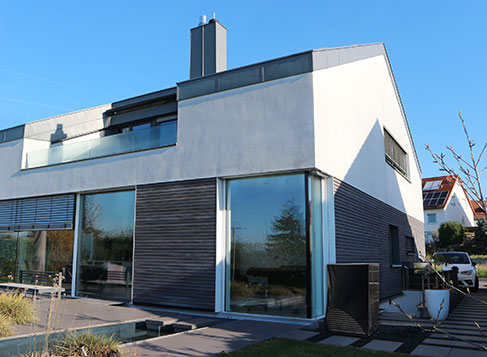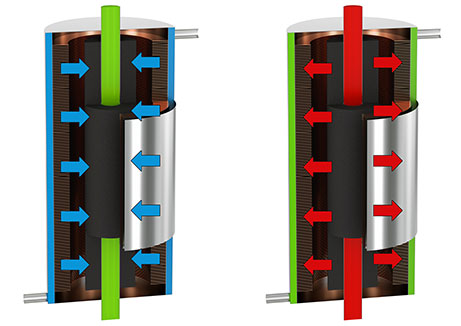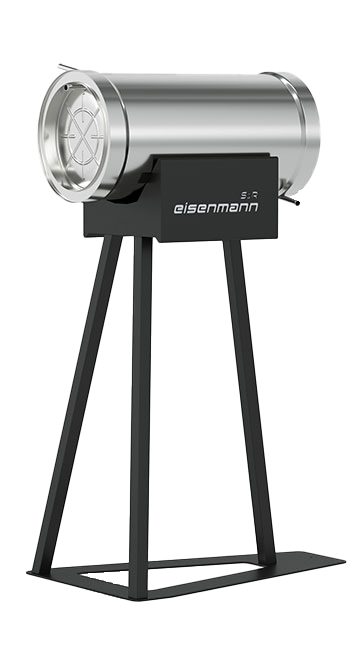Sorption modules for thermally driven heat pumps in residential buildings

Valuable savings potential
The main advantage of a thermally driven heat pump: It runs on thermal energy by burning gas instead of electricity. Alternatively, oil, wood or pellets can be used for propulsion. Additionally the pump uses warmth from the environment for heating. This saves fuel for homeowners and companies and reduces CO2 emissions.
Why do we recommend gas for driving the heat pump? In Germany, the gas network is very well developed — almost half of all residential buildings heat with gas.
Considering a future electricity shortage in the winter and the enormous storage capacity of the gas infrastructure, gas is an indispensable energy source in Germany. The gas shortage caused by the geopolitical situation is sending prices higher. This makes it all the more important to reduce gas consumption and to use gas as sensibly as possible. Even with future replacement of fossil gases with
renewably produced gas, the limited gas supply should be used as prudently as possible. The higher gas prices go, the faster a gas heat pump pays for itself.
Since 2019, S&R Eisenmann has developed sorption modules for thermally driven heat pumps. They drive heat pumps using methanol and activated charcoal even when the temperature outside is below freezing. The stable, self-contained sorption modules operate practically noise- and wear-free, because they contain no moving parts.
Intelligent operation
As with any heat pump, otherwise unusable ambient warmth is pumped to a higher temperature to heat with it. In this case, the energy needed to drive the process is thermal — it comes from burning fuels, such as gas. Only small amounts of supplementary electricity are needed. The sorption module is the main component of a heat pump system suitable for both new and existing buildings. It can be installed easily, with very little space. As summers get hotter, a system like this can also be used for air conditioning.
Using thermal energy from the fuel, methanol vapor is expelled from the activated charcoal. In the condenser, the methanol liquefies and provides useful heat. The condenser also serves as storage for the liquid methanol. As soon as the activated charcoal is “empty” and the condenser is “full”, hydraulic valves turn on and the methanol is vaporized by ambient heat, while release of useful heat adsorbs it in the activated charcoal as vapor. Once all the methanol has been vaporized and the activated charcoal is saturated, the hydraulic valves reverse the process again.

Four reasons to celebrate: Advantages of a thermally driven heat pump

Sustainability
A heat pump proportionally processes energy from the environment. This reduces fuel consumption up to 30% and reduces your CO2 footprint. That makes nature happy!

Cost efficiency
Gas prices are rising. Time for thrifty solutions! A thermally driven heat pump pays for itself after about 10 years of use. That makes your wallet happy!

Zero maintenance
If nothing moves, nothing breaks! Encapsulated cylindrical sorption modules from S&R Eisenmann have no moving parts, so they minimize wear to the heat pump. That makes the owner happy!

Scalability
From tiny homes to mammoth production halls, our sorption modules can be used individually or combined for higher output from the thermally driven heat pump. That makes the building developer happy!
Eisenmann as partner
Want to learn more about how you can reduce gas consumption up to 30% with our sorption modules?
Do you have other questions? Just contact us and arrange a consultation appointment!
